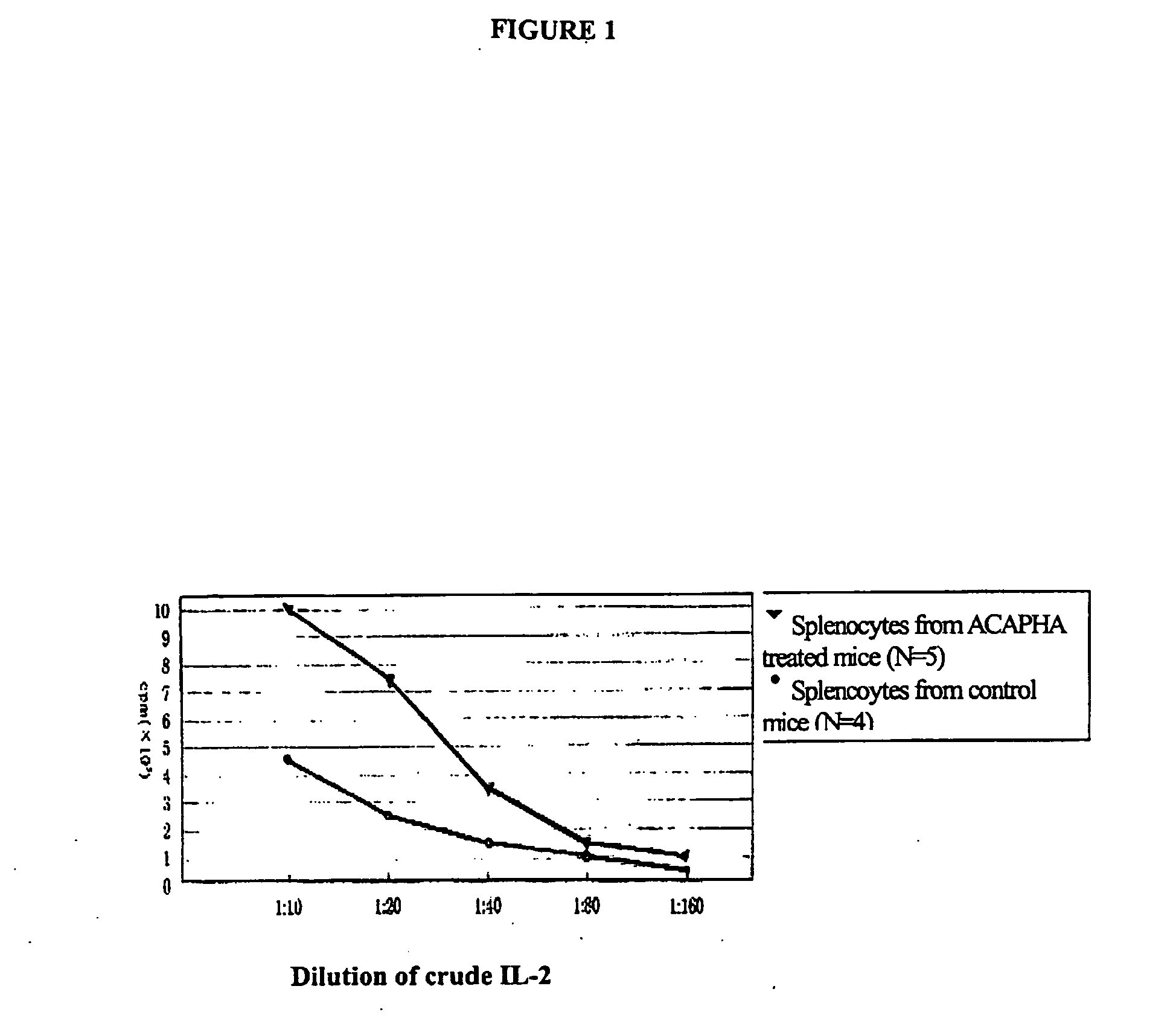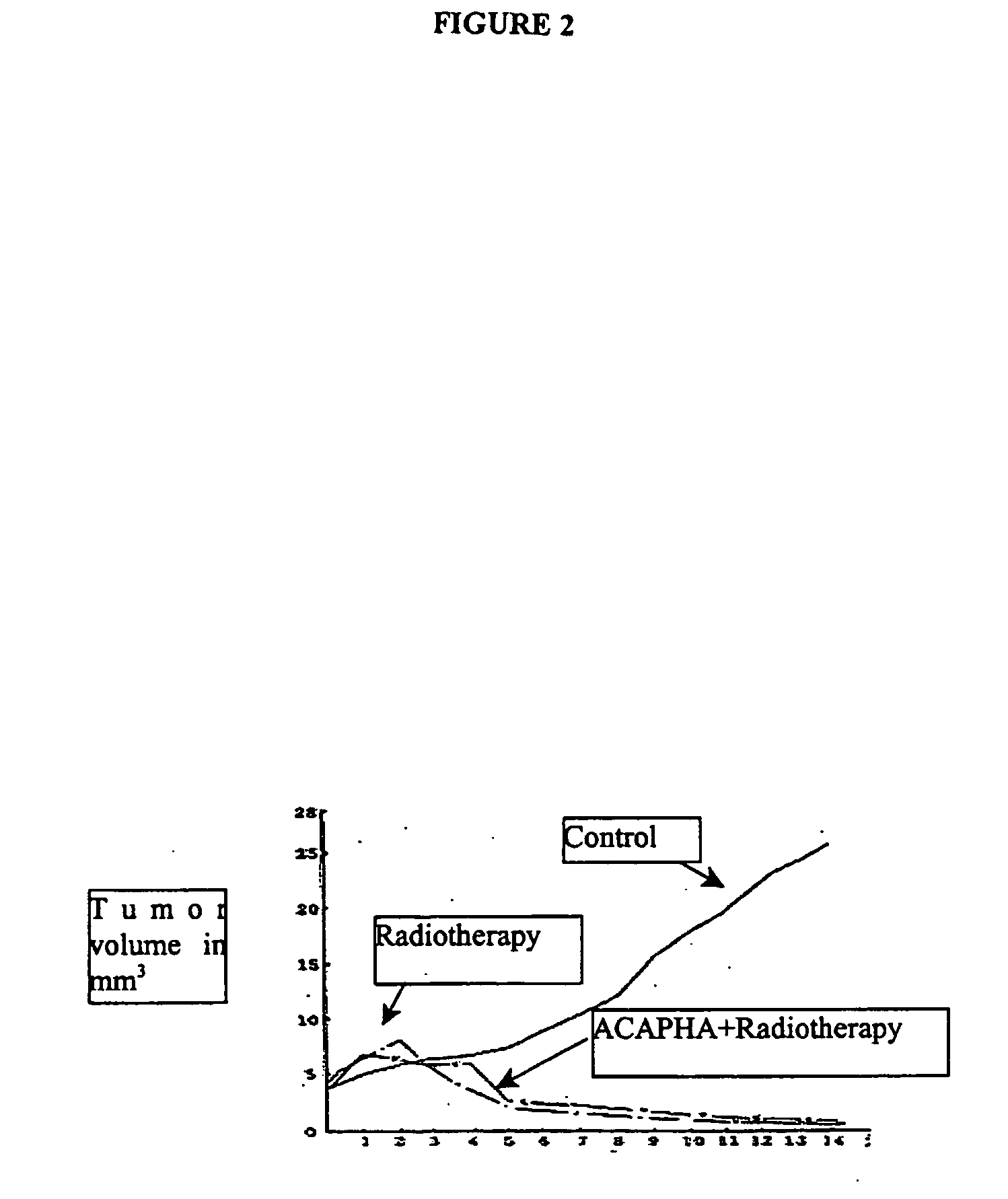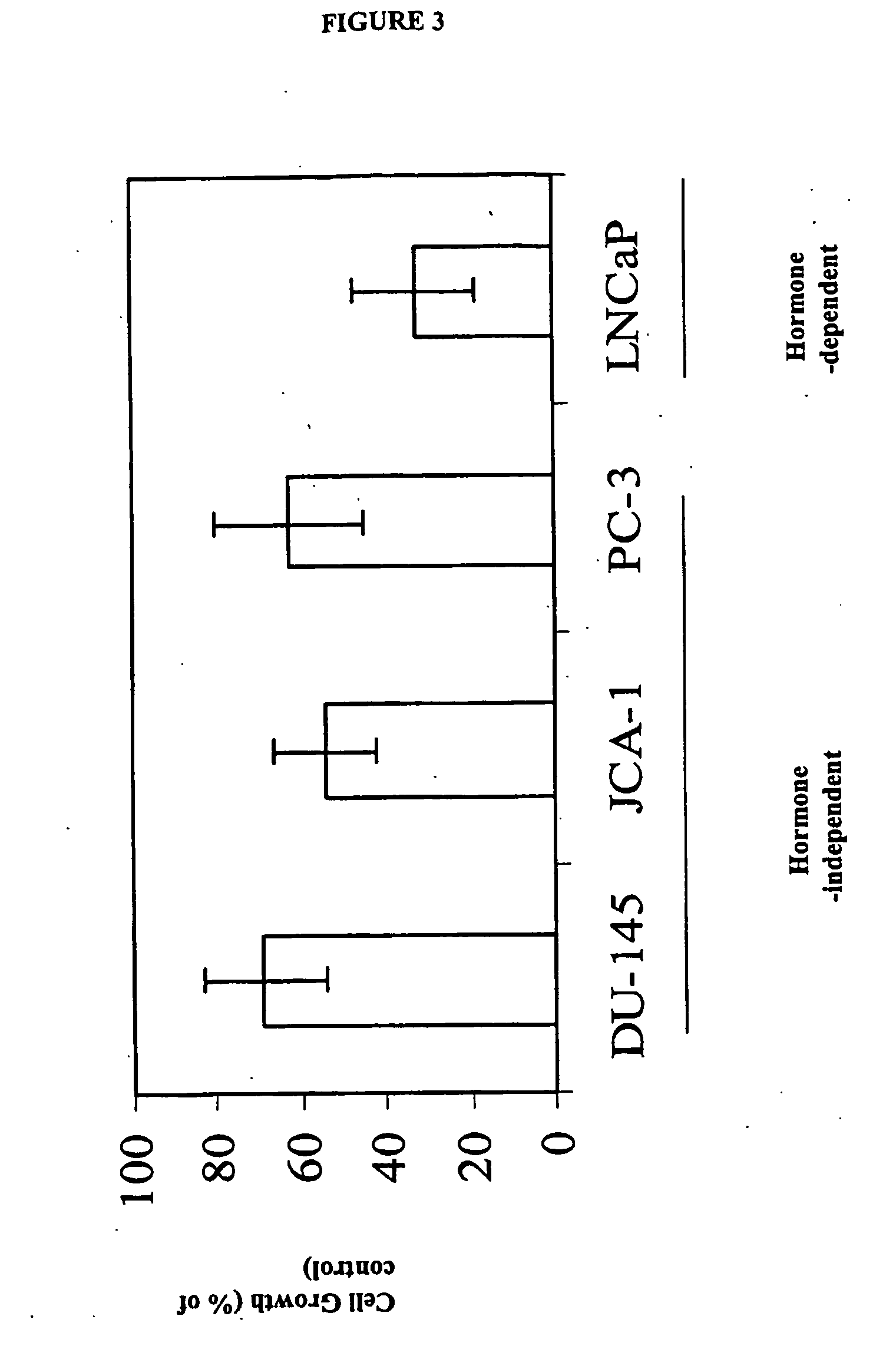Therapeutic methods using herbal compositions
a technology of herbal compositions and therapeutic methods, applied in the field of cancer research, can solve the problems of lung cancer imposing an enormous burden on health care, the goal of a fifty percent reduction in overall cancer mortality the mortality rate of the most common cancers. it can solve the problem of unmet goal, and achieve the goal of reducing the reoccurrence of cancer by the year 2000, treating or preventing chronic inflammation, and preventing cancer
- Summary
- Abstract
- Description
- Claims
- Application Information
AI Technical Summary
Benefits of technology
Problems solved by technology
Method used
Image
Examples
example 1
Antimutagenic and Anticancer-Promoting Properties
A) Antimutagenic Properties
Ames tests demonstrated that ACAPHA1 has no mutagenic activity. ACAPHA 1 however, has antimutagenic activity. At 5, 25, 100 mg / plate, it inhibited the reverse mutation of TA100 induced by MNNG (N-methyl-N′-nitro-N′-nitrosoguanidine) at 0.5 μg / plate (Table 1), AFB (Aflatoxin B) at 0.25 μg / plate (Table 2), Bap (Benzo(a)pyrene) at 0.5 μg / plate (Table 3), and that of TA98 induced by AFB at 0.25 μg / plate (Table 4).
TABLE 1Inhibition of ACAPHA on reverse mutation of TA100induced by MNNGACAPHAmg / plateMNNGColonyInhibition ratemg / discS-9mg / discX ± SD%100——157 ± 8.0 0——146 ± 10.40—0.5298 ± 19.65—0.5222 ± 23.025.525—0.5201 ± 61.732.6100—0.5189 ± 17.036.6
TABLE 2Inhibition of ACAPHA on reverse mutation of TA100induced by AFBACAPHAMNNGColonyInhibition ratemg / plateS-9mg / discX ± SD%100−9— 155 ± 16.500— 144 ± 9.2 000.251239 ± 66.0500.251030 ± 63.216.92500.25 550 ± 65.455.610000.25 352 ± 16.771.6
TABLE 3Inhibition of ACAP...
example 2
The Anti-Tumor and Tumor Prophylactic Effects of ACAPHA in Animals
A) ACAPHA 1 and ACAPHA+5FU's Inhibiting Effect on Induced Epithelial Carcinoma
BW Swiss female mice (22 to 28 g) were selected for the experiment. N-Nitrososarcosine ethylester (2 g / kg) were used to induce the dysplasia and carcinogenesis. Following the induction of dysplasia in the fore stomach, the carcinogen was discontinued. After 35 days ACAPHA and ACAPHA+5FU (5-fluorouracil) were then given at a dosage of 8 tablets / kg body weight, 3 times / wk, to a total of 20 times. The mice were weighed each week for the purpose of dose adjustment. After 11 weeks the mice were killed by cervical dislocation. After gross examination, the whole stomach was fixed in formalin and paraffin sections were stained with H&E (Hematoxylin & eosin). The lesions were classified into dysplasia, precancerous lesion, early stage and late stage of carcinoma. Table 10 shows that during the experiment, the weight growth of mice in ACAPHA group...
example 3
The Effect of ACAPHA 1 on Carcinoma of Nasopharynx in Rats Induced with Nitrosamine DNP (N N′-dinitrosopiperazine)
DNP (0.5%) was injected SC in the axilla of each rat twice a week for seven weeks to induce nasopharyngeal carcinoma. The Prevention Group began to receive ACAPHA one day before the DNP and treatment group began to receive ACAPHA one day after fourteen DNP injections. Table 21 shows that the canceration rate in the control group was 60%, significantly higher than the prevention group of 36.5% (p<0.05). The results indicated that ACAPHA has preventive effect on the development of nasopharyngeal carcinoma. ACAPHA treatment also has inhibitory effect. The data show that ACAPHA significantly reduced the development of precancerous lesions and canceration rates (P<0.01).
TABLE 21The prevention and the treatment with ACAPHA onprecancerous lesion of nasopharynx in rats induced by DNPNumberofPrecancerous LesionsCancerationGROUPfeedingNIIIIIIIV%PControl—606057231336(...
PUM
| Property | Measurement | Unit |
|---|---|---|
| Fraction | aaaaa | aaaaa |
| Fraction | aaaaa | aaaaa |
| Fraction | aaaaa | aaaaa |
Abstract
Description
Claims
Application Information
 Login to View More
Login to View More - R&D
- Intellectual Property
- Life Sciences
- Materials
- Tech Scout
- Unparalleled Data Quality
- Higher Quality Content
- 60% Fewer Hallucinations
Browse by: Latest US Patents, China's latest patents, Technical Efficacy Thesaurus, Application Domain, Technology Topic, Popular Technical Reports.
© 2025 PatSnap. All rights reserved.Legal|Privacy policy|Modern Slavery Act Transparency Statement|Sitemap|About US| Contact US: help@patsnap.com



